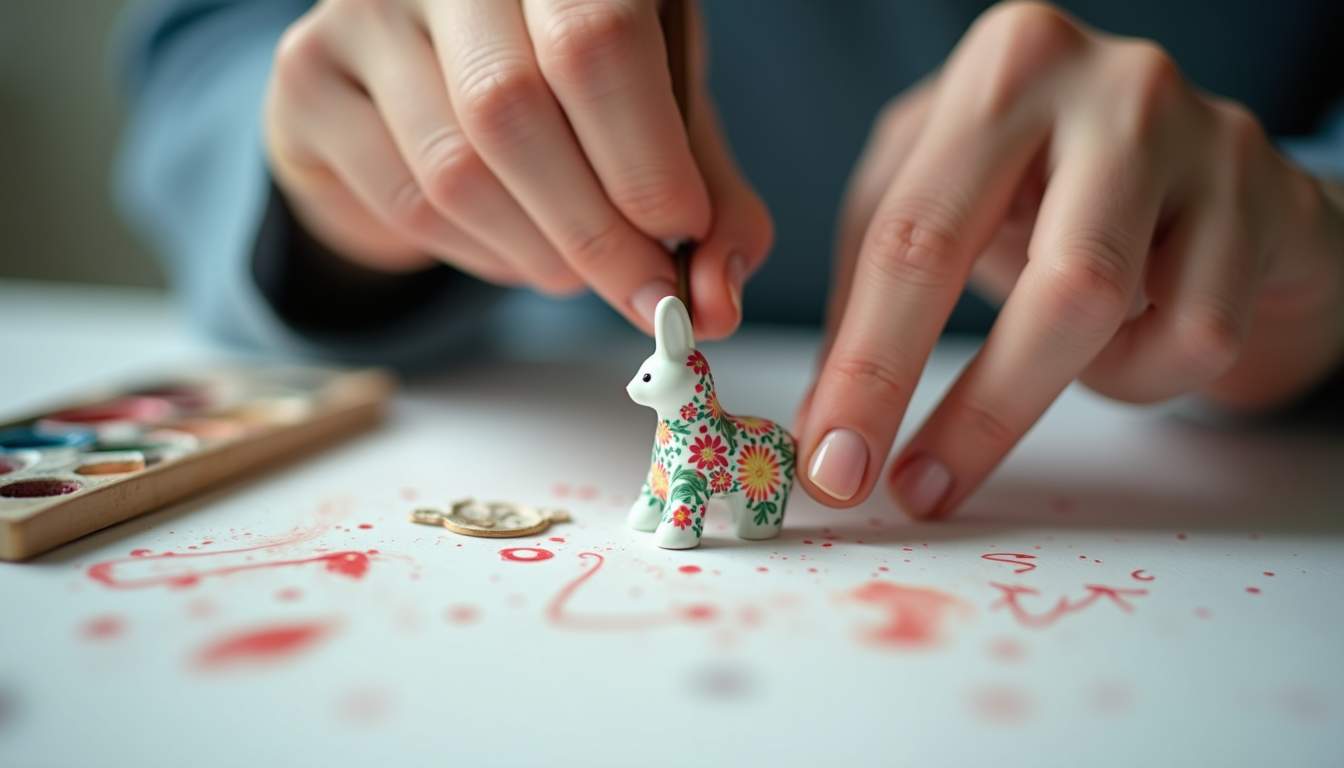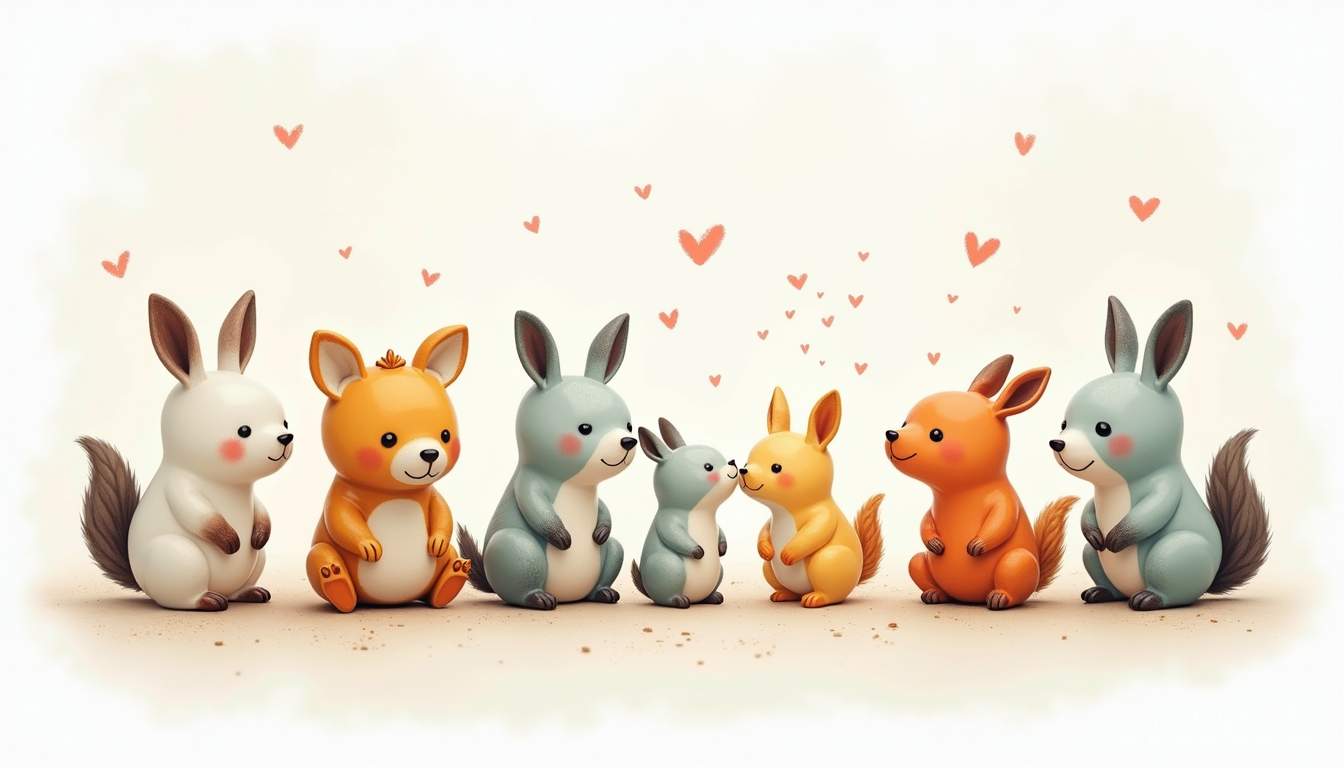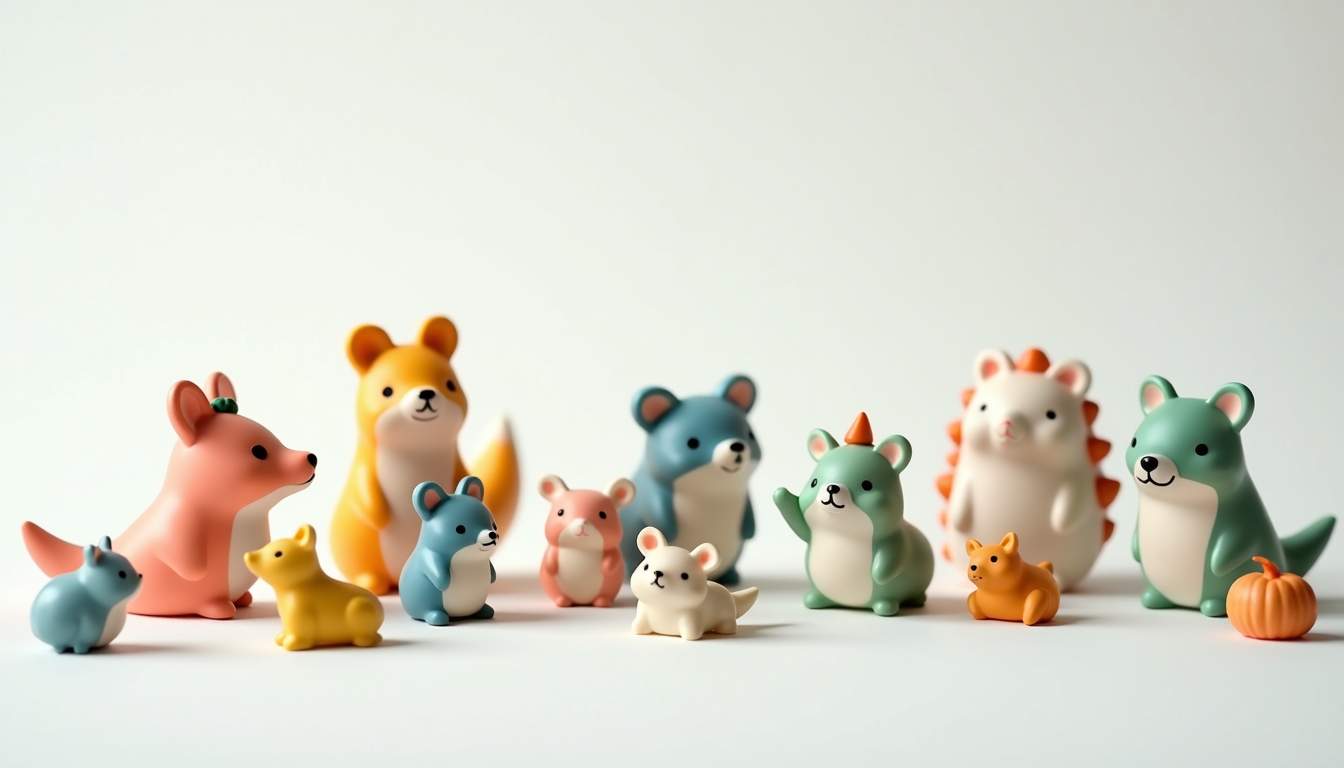Porcelain has long been celebrated for its delicate beauty and timeless elegance. Among its many artistic applications, one of the most enchanting is the creation of tiny porcelain figurines that capture the essence of nature’s creatures. These miniature masterpieces serve not only as decorative items but also as cherished keepsakes that connect us to the natural world in a uniquely tactile way.
In this article, we will explore the allure of porcelain animal figurines, the craftsmanship behind their creation, and the reasons why collectors and nature enthusiasts alike find joy in these petite representations of wildlife. Whether you are a seasoned collector or simply curious about these charming objects, there is much to discover about the tiny porcelain creatures that bring nature indoors.
The Art and Craftsmanship Behind Porcelain Figurines
The Origins of Porcelain in Art
Porcelain, often referred to as “white gold,” originated in China during the Tang Dynasty and reached its peak during the Ming Dynasty. Its fine, translucent quality and durability made it highly prized by artisans and collectors worldwide. Over centuries, porcelain evolved from functional dinnerware to a medium for intricate artistic expression, including the creation of detailed animal figurines.

The tradition of crafting porcelain animals blossomed in Europe during the 18th century, especially in places like Meissen, Germany, and Limoges, France. These regions became renowned for their exquisite porcelain workshops, where skilled artists meticulously sculpted and painted tiny creatures with astonishing realism and charm. The introduction of porcelain to Europe sparked a fervent demand for these delicate pieces, leading to the establishment of numerous factories that sought to replicate the high-quality Chinese imports. As a result, each factory developed its unique style, contributing to the rich tapestry of porcelain artistry that we see today. To explore modern takes on this timeless craft, visit Camp Hollow.
Techniques in Porcelain Figurine Creation
Creating a porcelain figurine is a labor-intensive process that requires both artistic vision and technical precision. It begins with sculpting a model, often from clay or wax, which serves as the prototype. This model is then used to create molds for casting the porcelain.
Once the porcelain clay slip is poured into the molds and dried, the figures are carefully removed and refined by hand. This stage involves delicate carving, smoothing, and adding fine details such as feathers, fur, or scales. After the initial firing, artists apply layers of glaze and hand-paint the figurines, sometimes incorporating gold or platinum accents for added elegance. Finally, the pieces undergo a second firing to set the colors and finish. Each step in this intricate process is crucial; even the slightest miscalculation can result in a flawed piece, making the craftsmanship behind porcelain figurines a true testament to the skill and dedication of the artisans.
Why Porcelain? The Unique Appeal
Porcelain’s appeal lies in its combination of fragility and resilience. Its smooth, almost glass-like surface allows for exquisite detail and vibrant colors that do not fade over time. This makes porcelain an ideal medium for capturing the subtle textures and hues found in nature’s creatures.
Moreover, the small size of these figurines invites close inspection, encouraging a deeper appreciation of the artistry and the natural forms they represent. Holding a tiny porcelain bird or fox in your hand can evoke a sense of wonder and connection to the wild, even in the heart of a bustling city. The meticulous attention to detail not only showcases the artist's skill but also tells a story, often reflecting cultural narratives or personal experiences. Collectors and enthusiasts often find themselves enchanted by the history and emotion encapsulated within each piece, making porcelain figurines not just decorative objects but cherished artifacts of human creativity and expression.
Exploring the Tiny Keepsake Collection: Themes and Inspirations
Birds: Symbols of Freedom and Grace
Birds are among the most popular subjects in porcelain figurine collections. Their varied shapes, colors, and poses offer endless inspiration for artists. From the delicate hummingbird with its iridescent plumage to the majestic owl with wise, penetrating eyes, each bird figurine tells a story.
Collectors often seek out species that hold personal significance or embody particular qualities. For example, a porcelain robin might symbolize renewal and hope, while a blue jay could represent intelligence and curiosity. These tiny birds bring a touch of the outdoors into homes, reminding owners of the beauty and freedom found in flight.
Woodland Creatures: Mystique and Charm
Woodland animals like foxes, squirrels, deer, and rabbits are beloved for their gentle, elusive nature. Porcelain figurines of these creatures often capture moments of stillness or playful movement, such as a fox curled up in rest or a squirrel clutching an acorn.
The charm of these figures lies in their ability to evoke the quiet magic of forest life. They serve as reminders of the delicate balance within ecosystems and the importance of preserving natural habitats. For many, these figurines are not just decorations but symbols of environmental stewardship and a love for the wild.
Marine Life: The Mysteries of the Deep
Though less common than birds and woodland animals, marine creatures also find their place in porcelain collections. Tiny dolphins, seahorses, and starfish are sculpted with attention to fluid lines and graceful forms, reflecting the movement of water.
Marine-themed figurines often appeal to those with a passion for the ocean or coastal living. They bring a sense of calm and wonder, evoking the vastness and mystery of underwater worlds. These pieces can also serve as souvenirs from seaside vacations or reminders of a lifelong fascination with marine biology.
Collecting Porcelain Nature Figurines: Tips and Insights
Starting Your Collection
Beginning a collection of porcelain nature figurines can be a rewarding journey. The first step is to identify what draws you most—whether it’s a particular animal, a style, or a specific artist or manufacturer. This focus will help guide your purchases and create a cohesive collection over time.
It’s advisable to start with pieces that are within your budget and resonate personally. Many collectors begin with small, affordable figurines before investing in rarer or more intricate works. Visiting galleries, antique shops, and online marketplaces can provide a wealth of options and inspiration.
Authenticity and Quality
Because porcelain figurines are highly collectible, it’s important to be aware of authenticity and quality. Genuine pieces from reputable makers often bear marks or signatures on their bases. These can include the manufacturer’s logo, artist initials, or production numbers.
Examining the craftsmanship is equally important. Look for smooth, well-defined details, consistent glazing, and vibrant, well-applied paint. Avoid pieces with chips, cracks, or uneven coloring, as these can diminish both aesthetic value and longevity.
Displaying and Caring for Your Figurines
Displaying porcelain figurines requires thoughtful consideration to highlight their delicate beauty while protecting them from damage. Glass cabinets with built-in lighting are popular choices, as they allow for visibility and reduce dust accumulation.
When handling these tiny treasures, always use clean, dry hands and avoid gripping fragile parts like wings or tails. Regular dusting with a soft brush or microfiber cloth will keep them looking pristine. Avoid exposure to direct sunlight or extreme temperatures, as these can cause fading or cracking over time.
The Emotional Connection: Why These Tiny Creatures Matter
A Touch of Nature in Everyday Life
In an increasingly urbanized world, porcelain nature figurines offer a tangible connection to the natural environment. They bring the serenity of a forest glade or the vibrant energy of a bird in flight into homes and offices, providing moments of calm and inspiration throughout the day.

For many, these keepsakes serve as reminders of cherished memories—childhood encounters with wildlife, family hikes, or travels to natural wonders. They encapsulate stories and emotions, making them far more than mere objects.
Symbolism and Personal Meaning
Beyond their aesthetic appeal, porcelain animals often carry symbolic meanings. Different cultures attribute various qualities to animals, such as wisdom, courage, or transformation. Owls, for instance, are widely regarded as symbols of knowledge, while rabbits can represent fertility and new beginnings.
Collectors may choose figurines that reflect their own values or aspirations, creating a personal narrative through their collection. This emotional resonance adds depth and significance to each piece, transforming collections into treasured legacies.
Gifts That Endure
Porcelain nature figurines make thoughtful, lasting gifts for loved ones. Their timeless beauty and symbolic meanings make them suitable for occasions ranging from birthdays to anniversaries and milestones. Unlike many modern gifts, these keepsakes can be passed down through generations, carrying stories and sentiments forward.
Choosing a figurine that reflects the recipient’s personality or interests shows care and attention, making the gift all the more meaningful. Whether it’s a delicate butterfly for a nature lover or a playful fox for someone with a mischievous spirit, these tiny creatures speak volumes.
Conclusion
Porcelain figurines of nature’s creatures offer a unique blend of artistry, craftsmanship, and emotional connection. Their delicate forms capture the essence of wildlife in a way that invites admiration and reflection. Whether displayed as part of a curated collection or treasured as individual keepsakes, these tiny porcelain animals enrich our lives by bringing the wonder of the natural world into our everyday surroundings.

As interest in sustainable living and environmental awareness grows, these figurines also serve as gentle reminders of the beauty worth preserving. They inspire appreciation for the creatures that share our planet and encourage a deeper bond with nature, even in the smallest of forms.
For anyone enchanted by the elegance of porcelain and the charm of the animal kingdom, collecting these tiny keepsakes is a journey filled with discovery, joy, and lasting memories.

